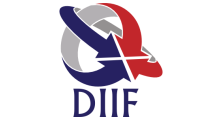Drinking water supplementation of licorice (Glycyrrhiza glabra L. root) extract as an alternative to in-feed antibiotic growth promoter in broiler chickens
DOI:
https://doi.org/10.30574/gscbps.2017.1.3.0039Keywords:
Performance, carcass trait, blood biochemical parameters, licorice extract, EnglishantibioticAbstract
The present study was conducted to determine the efficacy of licorice extract (LE) supplementation through drinking water as an alternative to an in-feed antibiotic growth promoter. A total of 400, 1-day-old broiler chickens (Cobb 500) were randomly divided into 20 separate floor pens each comprising 20 chickens and 4 pens (replicates) per treatment in a completely randomized design. The treatments included a control (no input), a diet containing 5 mg/kg antibiotic (lincomycin), and drinking water supplemented with 0.1, 0.2, or 0.3 g/L of LE, respectively. The body weight, feed intake, and feed conversion ratio were not significantly different among treatment groups (P > 0.05). Birds given drink water supplemented with 0.3 g/L of LE had significantly decreased abdominal fat percentage relative to control group (P < 0.05). Moreover, comparing with control, serum concentrations of glucose, low-density lipoprotein cholesterol and total cholesterol were decreased by LE supplementation at all three tested levels (P < 0.05). Dietary supplemental of antibiotics also caused significant decreases in total cholesterol and low-density lipoprotein cholesterol concentrations (P < 0.05). These results clearly showed that LE supplementation via drinking water had beneficial and positive influences on carcass quality and blood biochemical parameters of broiler chickens. However, because no significant difference was observed on growth performance among the broilers given the control, antibiotic, or the LE levels, further research is still needed to confirm the present results and to test the efficacy of LE as an alternative to an in-feed antibiotic growth promoter.Metrics
References
Da Costa PM, Bica A, Vaz-Pires P and Bernardo F. (2010). Changes in antimicrobial resistance among faecal enterococci isolated from growing broilers prophylactically medicated with three commercial antimicrobials. Preventive Veterinary Medicine, 93(1), 71–76.
Mukhopadhyay M and Panja P. (2008). A novel process for extraction of natural sweetener from licorice (Glycyrrhiza glabra) roots. Separation and Purification Technology, 63(3), 539–545.
Shalaby MA, Ibrahim HS, Mahmoud EM and Mahmoud AF. (2004). Some effects of Glycyrrhiza glabra (liquorice) roots extract on male rats. Egyptian Journal of Natural Toxins, 1, 83–94.
Doeker BM and Andler W. (1998). Liquorice, growth retardation and Addison’s disease. Hormone Research in Paediatrics, 52(5), 253–255.
Suchitra G and Shakunthala V. (2014). Effect of glycyrrhiza glabra root extract on behaviour and fitness of drosophila melanogaster and vestigial wing mutant. International Journal of Current Microbiology and Applied Sciences, 3(7), 1047–1054.
Račková L, Jančinová V, Petríková M, Drábiková K, Nosáľ R, Štefek M, Košťálová D, Prónayová N and Kováčová M. (2007). Mechanism of anti-inflammatory action of liquorice extract and glycyrrhizin. Natural Product Research, 21(14), 1234–1241.
Alkofahi A and Atta AH. (1999). Pharmacological screening of the anti-ulcerogenic effects of some Jordanian medicinal plants in rats. Journal of Ethnopharmacology, 67(3), 341–145.
Al-Qarawi AA, Abdel-Rahman HA and El-Mougy SA. (2001). Hepatoprotective activity of licorice in rat liver injury models. Journal of Herbs, Spices & Medicinal Plants, 8(1), 7–14.
Tominaga Y, Mae T, Kitano M, Sakamoto Y, Ikematsu H and Nakagawa K. (2006). Licorice flavonoid oil effects body weight loss by reduction of body fat mass in overweight subject. Journal of Health Science, 52(6), 672–683.
Aoki F, Honda S, Kishida H, Kitano M, Arai N, Tanaka H, Yokato S and Nakagawa K. (2007). Suppression by licorice flavonoids of abdominal fat accumulation and body weight gain in high-fat diet-induced obese C57BL/6J mice. Bioscience, Biotechnology, and Biochemistry, 71(1), 206–214.
Armanini D, Palo CB, Mattarello MJ, Spinella P, Zaccaria M, Ermolao A, Palermo M, Fiore C, Sartorato P, Francini-Pesenti F and Karbowiak I. (2003). Effect of licorice on the reduction of body fat mass in healthy subjects. Journal of endocrinological investigation, 26(7), 646–650.
Nakagawa K, Kishida H, Arai N, Nishiyama T and Mae T. (2004). Licorice flavonoids suppress abdominal fat accumulation and increase in blood glucose level in obese diabetic KK-A(y) mice. Biological and Pharmaceutical Bulletin, 27(11), 1775–1778.
SAS Institute. (2003). SAS User’s Guide. Version 9.1 reviews. SAS Institute Inc, Cary, NC.
Sedghi M, Golian A, Kermanshahi H and Ahmadi H. (2010). Effect of dietary supplementation of licorice extract and a prebiotic on performance and blood metabolites of broilers. South African Journal of Animal Science, 40(4), 371–380.
Pooryousef Myandoab M and Hosseini Mansoub N. (2012). Comparative effect of liquorice root extract medicinal plants and probiotic in diets on performance, carcass traits and serum composition of Japanese quails. Global Veterinaria, 8(1), 39–42.
Al-Daraji HJ. (2012). The use of liquorice, probiotic, potassium chloride and sodium bicarbonate to counteract the detrimental effects of heat stress on performance of broilers. Global Advanced Research Journal of Agricultural Science, 1(6), 127–135.
Sudarman A and Kaniadewi R (2012). Performance of broiler chickens offered drinking water contained water extracted beluntas (Pluchea indica L.) leaf and sugar cane. Media Peternakan - Journal of Animal Science and Technology, 35(2), 117–122.
Salman KAA and Ibrahim DK. (2012). Test the activity of supplementation clove (Eugenia caryophyllus) powder, oil and aqueous extract to diet and drinking water on performance of broiler chickens exposed to heat stress. International Journal of Poultry Science, 11(10), 635–640.
Habibian M, Ghazi S and Moeini MM. (2016). Effects of dietary selenium and vitamin E on growth performance, meat yield, and selenium content and lipid oxidation of breast meat of broilers reared under heat stress. Biological Trace Element Research, 169(1), 142–152.
Eseceli H, Demir E, Degirmeneioglu N and Bilgic M. (2010). The effects of bio-Mos® mannan oligosaccharide and antibiotic growth promoter performance of broilers. Journal of Animal and Veterinary Advances, 9(2), 392–295.
Sarker SK, Park SR, Kim GM and Yang CJ. (2010). Hamcho (Salicornia herbacea) with probiotics as alternative to antibiotic for broiler production. Journal of Medicinal Plants Research, 4(5), 415–420.
Lee DN, Lyu SR, Wang RC, Weng CF, and Chen BJ. (2011). Exhibit differential functions of various antibiotic growth promoters in broiler growth, immune response and gastrointestinal physiology. International Journal of Poultry Science, 10(3), 216–220.
Miles RD, Butcher GD, Henry PR and Littell RC. (2006). Effect of antibiotic growth promoters on broiler performance, intestinal growth parameters, and quantitative morphology. Poultry Science, 85(3), 476–485.
Ashayerizadeh A, Dabiri N, Ashayerizadeh O, Mirzadeh KH, Roshanfekr H and Mamooee M. (2009). Effect of dietary antibiotic, probiotic and prebiotic as growth promoters, on growth performance, carcass characteristics and hematological indices of broiler chickens. Pakistan Journal of Biological Sciences, 12(1), 52–57.
Hassan HMA, Mohamed MA, Youssef AW, and Hassan ER. (2010). Effect of using organic acids to substitute antibiotic growth promoters on performance and intestinal microflora of broilers. Asian-Australasian Journal of Animal Sciences, 23(10), 1348–1353.
Wolfenden RE, Pumford NR, Morgan MJ, Shivaramaiah S, Wolfenden AD, Pixley CM, Green J, Tellez G and Hargis BM. (2011). Evaluation of selected direct-fed microbial candidates on live performance and Salmonella reduction in commercial turkey brooding houses. Poultry Science, 90(11), 2627–2631.
Nakai M, Fukui Y, Asami S, Toyoda-Ono Y, Iwashita T, Shibata H, Mitsunaga T, Hashimoto F and Kiso Y. (2005). Inhibitory effects of oolong tea polyphenols on pancreatic lipase in vitro. Journal of Agricultural and Food Chemistry, 53(11), 4593–4598.
Van Gaal LF, Rissanen AM, Scheen AJ, Ziegler O and Rossner S. (2005). Effects of the cannabinoid-1 receptor blocker rimonabant on weight reduction and cardiovascular risk factors in overweight patients: 1-year experience from the RIO-Europe study. The Lancet, 365(9468), 1389–1397.
Murase T, Nagasawa A, Hase T, Tokimitsu I, Shimasaki H and Itakura H. (2001). Dietary tea catechins reduce development of obesity accompanied with gene expression of lipid-metabolizing enzymes in mice. Journal of Oleo Science, 50(9), 711–715.
Moharrery A. (2006). Comparison of performance and digestibility characteristics of broilers fed diets containing treated hulled barley or hulless barley. Czech Journal of Animal Science, 51(3), 122–131.
Kamisoyama H, Honda K, Tominaga Y, Yokota S and Hasegawa S. (2008). Investigation of the anti-obesity action of licorice flavonoid oil in diet-induced obese rats. Bioscience, Biotechnology, and Biochemistry, 72(12), 3225–3231.
Al-Daraji HJ. (2012). Influence of drinking water supplementation with licorice extract on certain blood traits of broiler chickens during heat stress. Report and Opinion, 4(9), 56–60.
Visavadiya NP and Narasimhacharya AVRL. (2006). Hypocholesterolaemic and antioxidant effects of Glycyrrhiza glabra (Linn) in rats. Molecular Nutrition & Food Research, 50(11), 1080–1086.
Ostlund RE. (2004). Phytosterols and cholesterol metabolism. Current Opinion in Lipidology, 15(1), 37–41.
Harwood HJ, Chandler CE, Pellarin LD, Bangerter FW, Wilkins RW, Long CA, Cosgrove PG, Malinow MR, Marzetta CA and Pettini JL. (1993). Pharmacologic consequences of cholesterol absorption inhibition: alteration in cholesterol metabolism and reduction in plasma cholesterol concentration induced by the synthetic saponin beta-tigogenin cellobioside (CP-88818; tiqueside). The Journal of Lipid Research, 34(3), 377–395.
Venkatesan N, Devaraj SN and Devaraj H. (2003). Increased binding of LDL and VLDL to apo B, E receptors of hepatic plasma membrane of rats treated with Fibernat. European Journal of Nutrition, 42(5), 262–271.
Gursu MF, Onderci M, Gulcu F and Sahin K. (2004). Effects of vitamin C and folic acid supplementation on serum paraoxonase activity and metabolites induced by heat stress in vivo. Nutrition Research, 24(2), 157–164.
Vinson JA, Hu SJ, Jung S and Stanski AM. (1998). A citrus extract plus ascorbic acid decreases lipids, lipid peroxides, lipoprotein oxidative susceptibility, and atherosclerosis in hypercholesterolemic hamsters. Journal of Agricultural and Food Chemistry, 46(4), 1453–149.
Rice-Evans CA, Miller NJ, Bolwell PG, Bramley PM and Pridham JB. (1995). The relative antioxidant activities of plant-derived polyphenolic flavonoids. Free Radical Research, 22(4), 375–383.
Fuhrman B, Volkova N, Kaplan M, Presser D, Attias J, Hayek T and Aviram M. (2002). Antiatherosclerotic effects of licorice extract supplementation on patients: Increased resistance of LDL to atherogenic modifications, reduced plasma lipid levels, and decreased systolic blood pressure. Nutrition, 18(3), 268–273.
Vaya J, Belinky PA and Aviram M. (1997). Antioxidant constituents from licorice roots isolation, structure elucidation and antioxidative capacity toward LDL oxidation. Free Radical Biology & Medicine, 23(2), 302–313.
Fukai T, Satoh K, Namura T and Sakagami H. (2003). Antinephritis and radical scavenging activity of prenylflavonoids. Fitoterapia, 74(7-8), 720–724.
Sarica S, Ciftci A, Demir E, Kilinc K and Yildirim Y. (2005). Use of an antibiotic growth promoter and two herbal natural feed additives with and without exogenous enzymes in wheat based broiler diets. South African Journal of Animal Science, 35(1), 61–72.
Ciftci M, Simsek UG, Yuce A, Yilmaz O and Dalkilic B. (2010). Effects of dietary antibiotic and cinnamon oil supplementation on antioxidant enzyme activities, cholesterol levels and fatty acid compositions of serum and meat in broiler chickens. Acta Veterinaria Brno, 79(1), 33–40.
Downloads
Published
How to Cite
Issue
Section
License

This work is licensed under a Creative Commons Attribution-NonCommercial-ShareAlike 4.0 International License.

















